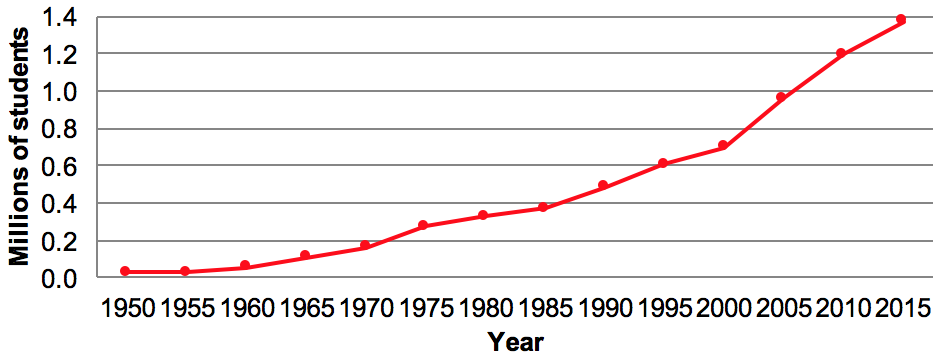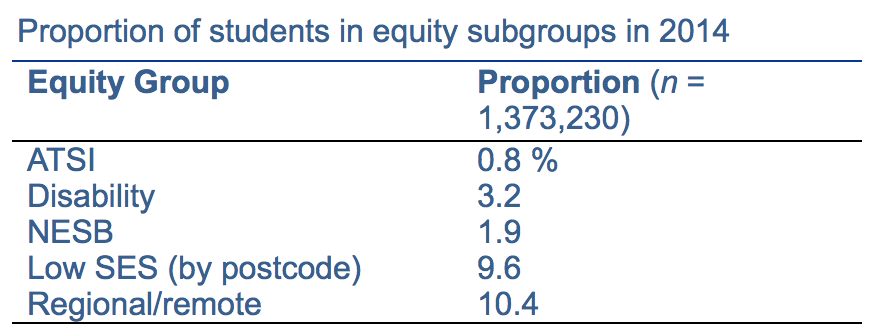Activity (5 Quiz Questions)
1. Since 1980, the number of students in higher education has:
Answer
The correct answer is: Quadrupled in size
The student population has grown significantly in the past few decades as the sector has moved from an elite system where only a small proportion of the population entered university (approximately 300,000 in 1980), to mass participation with over 1.2 million people enrolled in Australian higher education in 2015. The growth is likely to continue given recent government policies to create a demand driven system and encourage widening participation.
Enrolments in higher education, 1950-2015

Note: Data from are based on number of students enrolled (student numbers)
2. Q2 In 1950, only 1 in 5 students in higher education was female, today the proportion of females enrolling in higher education is approximately:
Answer
The correct answer is: Approximately 55%.
The statistics from the Department of Education and Training show that gender equality has now been achieved in higher education with females making up approximately 55% of the student population in 2014.
3. What proportion of students in Australian higher education today are enrolled as international students?
Answer
The correct answer is: Approximately 25%.
According to the Department of Education, international students make up approximately 25% of the student population in Australian higher education.
4. What proportion of the current student population are “mature-aged students” (25 years or older)?
Answer
The correct answer is: Between 30% and 44%.
According to the Department of Education, 37% of the student population are aged 25 or older, 39% are aged between 20 and 24, and 24% are aged 19 years or younger. The social, financial and educational circumstances that affect students’ learning across these age groups vary considerably. For instance students during their late teenage years may face issues related to self-identity and emerging independence. These issues are often less important for students in older age groups, whose concerns may relate to family responsibilities and financial commitments.
5. What proportion of students in Australian higher education today come from regional/remote areas?
Answer
The correct answer is: Between 10% and 14%.
According to the Department of Education, in 2014, approximately 10% of the student population traveled from remote or regional areas to study. Other equity groups are smaller in comparison, as outlined in the table below: approximately 3% reported having a physical or psychological disability, 10% came from low socio-economic backgrounds, and 2% had non-English speaking backgrounds. Each of these equity groups has specific needs and issues. With this diversity, there is an increasing need for specialised services and for flexible and varied learning activities that benefit students with different needs.

